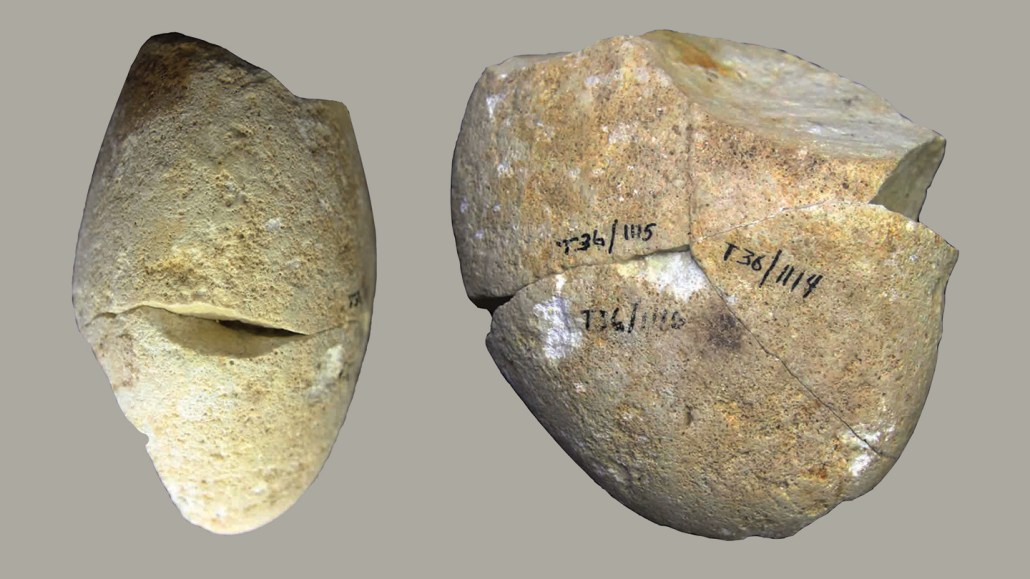The oldest known abrading tool was used around 350,000 years ago
Using a grinding or rubbing stone represented an early shift in stone-tool making

A flat surface at the top of a round stone, shown from two angles, originally found in three pieces at Israel’s Tabun Cave, was used to grind or rub hides or other relatively soft material around 350,000 years ago. That makes this find the oldest known abrading tool.
Iris Groman-Yaroslavski







